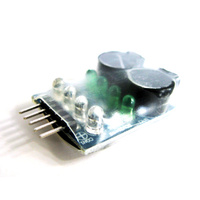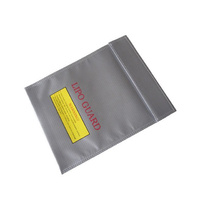Lipo and Li-Ion Battery Safety Guide

Modern Lithium based batteries such as Lithium Polymer (Lipo), Lithium Ion (Li-Ion) and more recently Lithium Iron Phosphate (LiFePO4) batteries are a great new way of storing energy for portable devices from cell phones, home electronics to RC hobby battery packs used in cars, boats and flight.
These modern rechargeable battery types can store up to 350% (approximately) more energy than a typical NiCD/NiMH battery pack and weigh 10% - 30% less. They can also discharge much more current than a NiCD/NiMH battery and be fully charged in about an hour (based on manufacturer specifications). Lithium based rechargeable batteries also don't develop memory or voltage depression characteristics like NiCD/NiMH batteries, and do not need to be discharged before being charged.
But they're not without their downside. Mishandling of these batteries can lead to fire, explosions and toxic smoke inhalation. In the rest of this guide we will cover safety guidelines of charging and handling modern lithium based battery packs. Some may seem pretty obvious, but it is often the obvious things that are the most dangerous when ignored.
Another good resource is our Introduction to Lipo Batteries. This page is a very good resource on Lipo battery ratings and terms and if you are new to Lipo technology we recommend you read this as well.
Charging
- Always use a charger made to charge the specific lithium based rechargeable battery. Either Lipo, Li-Ion or LiFePo4. There are subtle differences between all the various Lithium battery types and it is important that the right charger to suit the battery is always used.
- Double check that the settings for the lithium charger are correct for the pack being charged. This includes the cell count, as well as the current settings.
- In general, most lithium batteries should be charged to no more than 4.2 volts per cell or depleted to less than 3.0 volts per cell.
- Ensure that charging leads are connected correctly. Reverse charging can lead to cell damage or a fire or explosion.
- Always charge Lithium based rechargeable batteries on surfaces that won’t catch on fire such as cement, steel, ceramic or stone. Wooden tables and carpeted floors are not recommended charging surfaces.
- Do not charge batteries near flammable products or liquids.
- Never charge a LiPo / Li-Ion / LiFePO4 battery while inside your model or other electronic device. If it catches fire it can lead to total destruction of the item it is being charged in.
- LiPo / LiFePO4 / Li-Ion batteries should be charged within a temperature range of 0C to 50C. Batteries charged outside this temperature range may experience leakage, heat generation or cell damage.
- Never leave a charging lithium battery pack unattended.
- Do not charge inside an automobile, especially while driving.
- Do not store batteries inside an automobile.
- If unsure of the charge rating, never charge a lithium battery or battery pack at a rate over 1C (1 x the battery packs rated capacity).
- Never charge a LiFePO4, Lipo or Li-Ion battery that has ballooned or swelled due to over / under charging or from a crash.
- Never charge a lithium battery pack that has been punctured or damaged in a crash.
- Never, under any circumstances let the positive and negative battery leads touch each other. It can lead to cell ballooning, cell damage or instant fire or an explosion.
- Have a fire extinguisher near the charging area or a large bucket of dry sand. Do not try to distinguish with water.
- If you notice your Lithium rechargeable battery pack is swelling, stop the charging process immediately, put the battery in a safe container and observe it for 15 minutes.
- Always charge your Lipo, Li-Ion and LiFePO4 battery packs in a Lipo charging safe bag.
Li-Ion / Lipo / LiFePO4 Battery Handling & Storage
- Keep battery packs WELL out of reach of children.
- Do not put battery packs in pockets or bags where they can short circuit.
- Do not store or transport batteries where they can come into contact with sharp or metallic objects.
- Do not store your batteries in extreme temperatures below 0C or above 50C.
- Always store your batteries in a safe and non flammable container away from flammable objects. A LiPo Sack or metal / ceramic storage container is best.
- Always store your Lithium rechargeable batteries partially charged. They will maintain their performance levels over time and there’s no need to cycle them unless stored for periods longer than 3-6 months.
- Do not immerse the battery in water or allow the battery to get wet.
- Do not dispose of in fire or heat.
- When mailing or shipping batteries, always ship them at a 30% charged state for safety reasons.
- When storing batteries for extended periods, store at a half charged state.
- To dispose of a battery, discharge it fully then place it in a bucket of salt water for one week. To dispose of, follow your municipal battery disposal guidelines.
- Finally, always follow the manufacturer’s safety instructions and charging guidelines for lithium battery packs. These are there for not only the longevity of the battery pack, but also your safety.






